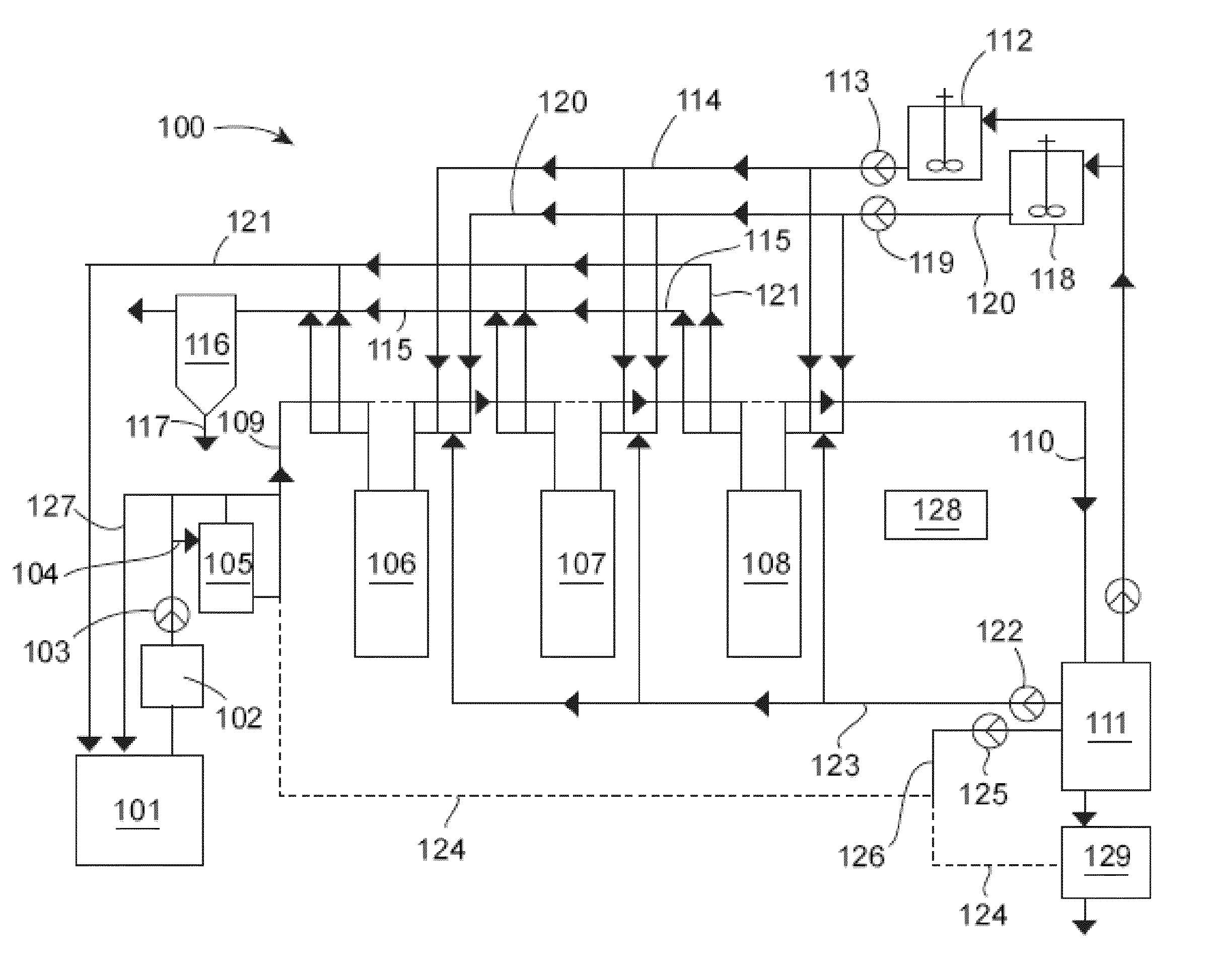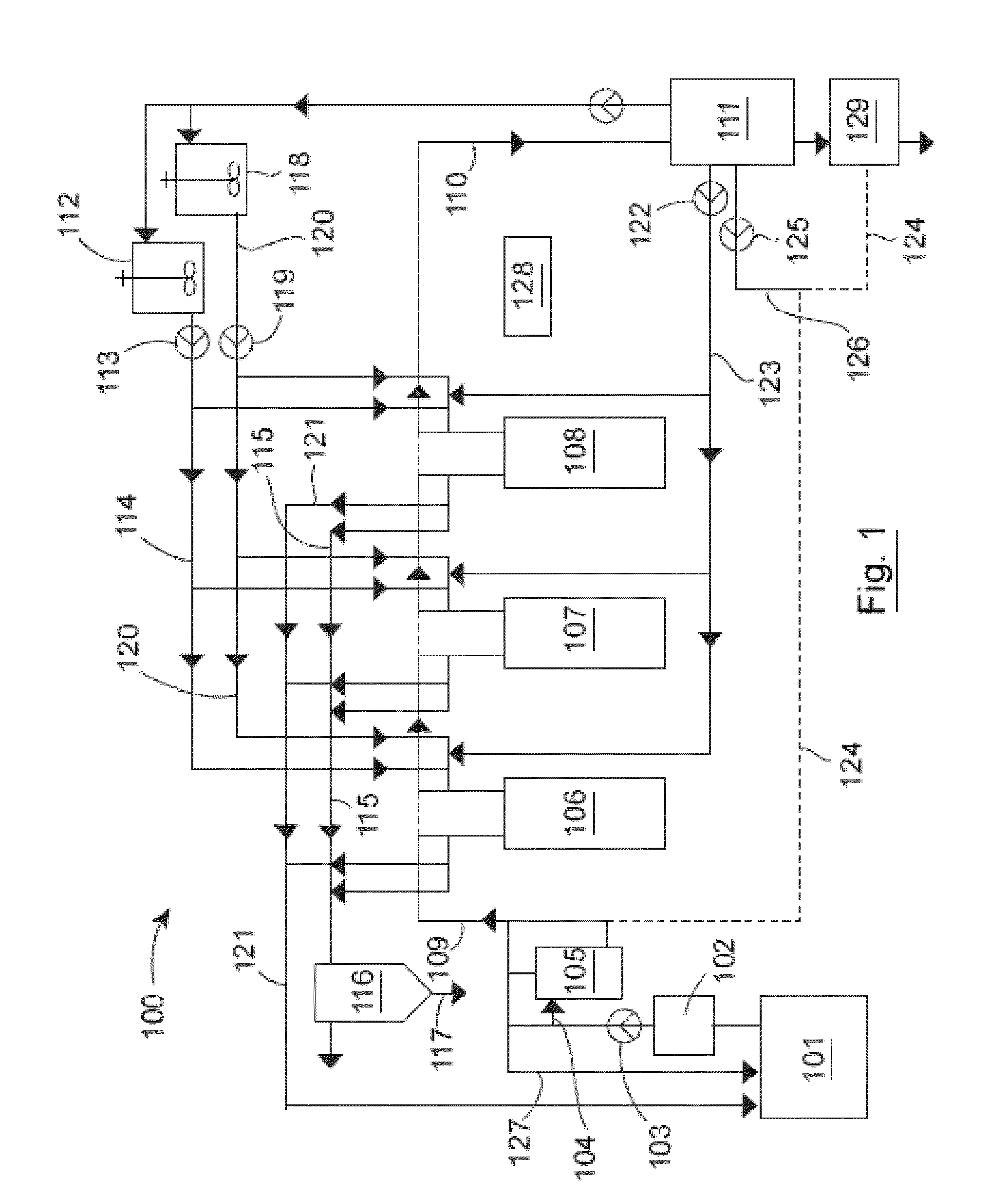Effluent treatment process
a technology of effluent treatment and treatment process, which is applied in the direction of water treatment parameter control, specific water treatment objectives, cation exchangers, etc., can solve the problems of high phosphate content of treated effluent, chemical oxygen demands, and connection to a centralised effluent, so as to reduce the overall cost of handling the effluent, reduce the risk to the environment, and remove phosphate. high
- Summary
- Abstract
- Description
- Claims
- Application Information
AI Technical Summary
Benefits of technology
Problems solved by technology
Method used
Image
Examples
Embodiment Construction
[0061]The invention will now be more clearly understood from the following description of some embodiments thereof given by way of example only, in which:
[0062]FIG. 1 is a diagrammatic representation of a first effluent treatment process assembly according to the present invention; and,
[0063]FIG. 2 is a diagrammatic representation of a second effluent treatment process according to the present invention.
[0064]Referring to FIG. 1, there is shown an effluent treatment assembly, indicated generally by the reference numeral 100, comprising a waste water treatment plant 101 from which partially treated sewage coming is collected in a sump 102. The partially treated sewage is delivered by a pump 103, at a pre-determined rate, through a conduit 104 to a primary filter 105. The effluent may be analysed, to determine flow rate, pH level, turbidity and phosphate content en route to the primary filter 105 or directly subsequent to the primary filter 105. If the effluent does not meet the requi...
PUM
| Property | Measurement | Unit |
|---|---|---|
| diameter | aaaaa | aaaaa |
| concentrations | aaaaa | aaaaa |
| volume | aaaaa | aaaaa |
Abstract
Description
Claims
Application Information
 Login to View More
Login to View More - R&D
- Intellectual Property
- Life Sciences
- Materials
- Tech Scout
- Unparalleled Data Quality
- Higher Quality Content
- 60% Fewer Hallucinations
Browse by: Latest US Patents, China's latest patents, Technical Efficacy Thesaurus, Application Domain, Technology Topic, Popular Technical Reports.
© 2025 PatSnap. All rights reserved.Legal|Privacy policy|Modern Slavery Act Transparency Statement|Sitemap|About US| Contact US: help@patsnap.com



